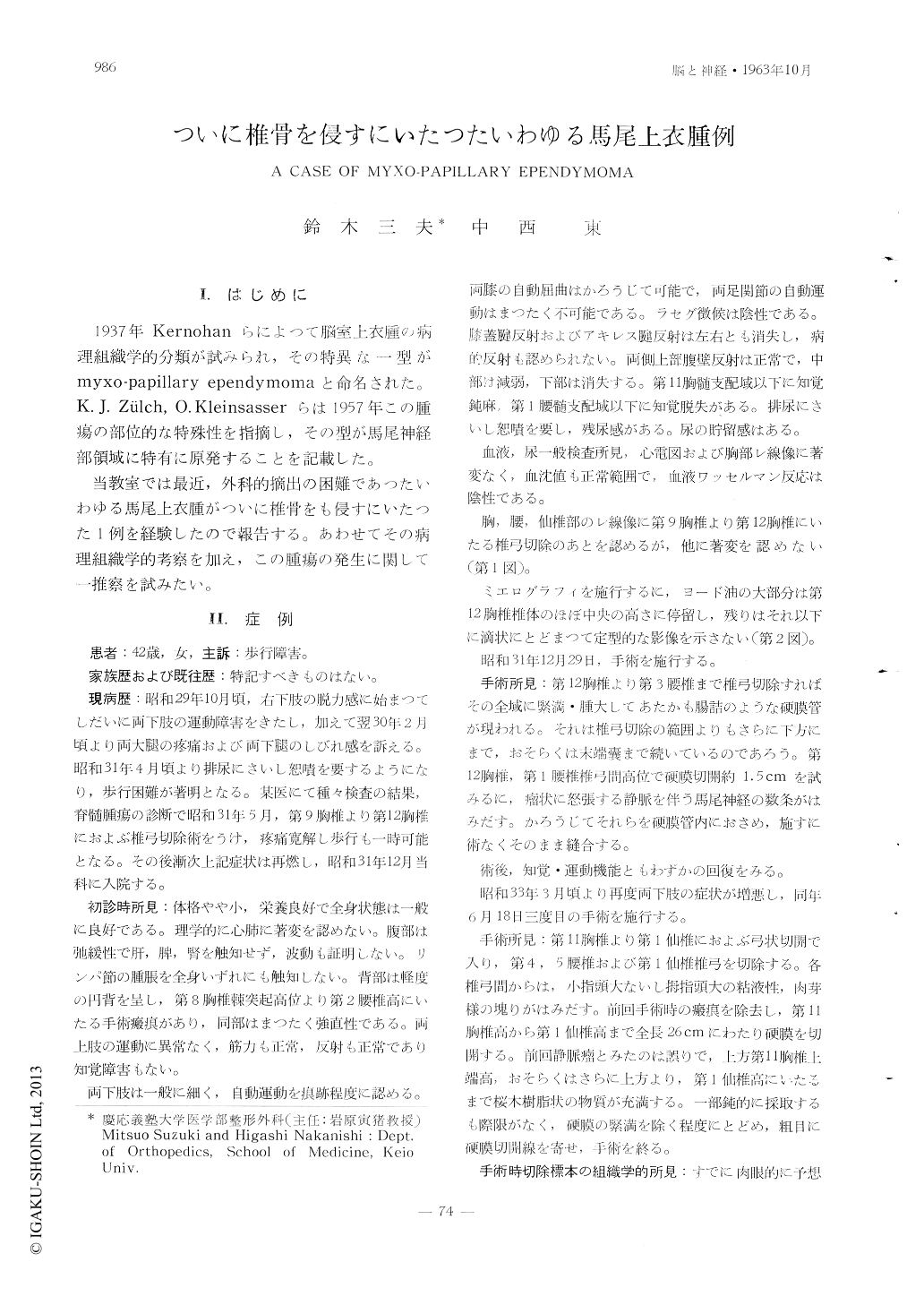Japanese
English
- 有料閲覧
- Abstract 文献概要
- 1ページ目 Look Inside
I.はじめに
1937年Kernohanらによつて脳室上衣腫の病理組織学的分類が試みられ,その特異な一型がmyxo-papillary ependymomaと命名された。K.J. Zülch, O. Kleinsasserらは1957年この腫瘍の部位的な特殊性を指摘し,その型が馬尾神経部領域に特有に原発することを記載した。
当教室では最近,外科的摘出の困難であつたいわゆる馬尾上衣腫がついに椎骨をも侵すにいたつた1例を経験したので報告する。あわせてその病理組織学的考察を加え,この腫瘍の発生に関して一推察を試みたい。
1) A myxo-papillary ependymoma so-called arising in the cauda equina region of the spinal cord and invading the lumbar spine is presented.
Patient was a housewife aged fourty-two who developed motor weakness of the bilate-ral lower legs followed by flaccid paralysis and sensory loss of the lower extremities accompanied with urinary retention.
2) Myelography revealed partial block of descending radiopaque medium at the level of the eleventh thoracic vertebra.
3) Surgery revealed soft, gelatinous tumor mass filled in the dura extending superiorly above the level of the eleventh vertebra and inferiorly to the level of the first sacral seg-ment. Cauda equina nerve roots were embed-ded in the tumor, which was not completely removable.
4) One year after the surgery, lytic dest-ruction and compression of the body of the second lumbar vertebra were demonstrated in the radiograph. Needle biopsy was perfor-med to the lesion, which revealed a picture of the tumor tissue intruding into the bone mat-rix.
5) So-called "myxo-papillary type of the ependymoma" arises strictly peculiar to the cauda equina region and is conspicuous both grossly and histologically in comparison with the ependymomas occurred in the upper cen-tral nervous system. These facts remind us that the origin of the neoplasm has some relation to the embrional rest of the neuropo-rus candalis.

Copyright © 1963, Igaku-Shoin Ltd. All rights reserved.


